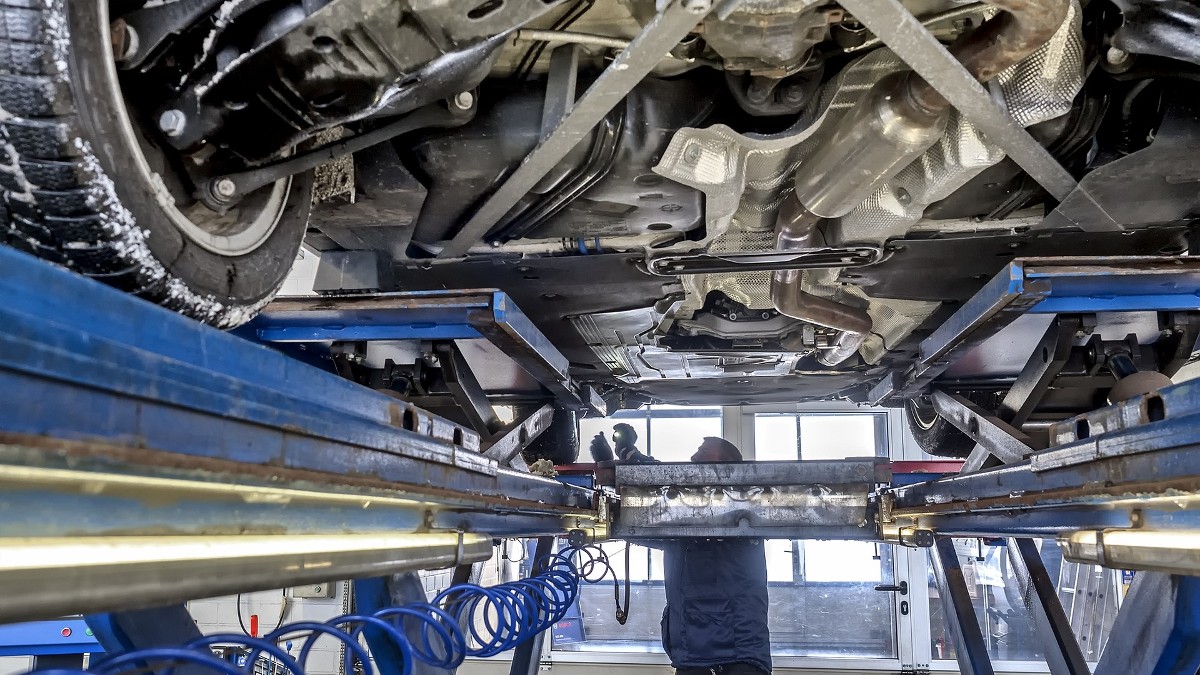Do you notice a wheel lifting action or hopping motion from static unbalance while driving? The motion may be up and down or forward and backward. It’s known as an axle tramp. Perhaps you are wondering what causes it and how to stop it.
An axle tramp is when your car wheels seem to rise and fall in a jittery fashion. It results from cyclic vertical inputs resulting from tire failure or issues with the suspension system. A professional mechanic can fix this by making necessary upgrades or replacements.
Axle tramp happens when your right or left wheels begin hopping out of phase. It’s an undesirable nonlinear vibration of the car’s live axle resulting from internal friction, vertical stiffness of the suspensions, and mass of components.
What Is An Axle Tramp?
An axle tramp is when an RWD or FWD car loses traction on the road surface, causing the wheels to bounce or vibrate vertically. The car becomes loud, and the phenomenon may cause potential damage to various parts.
Axle tramp, also known as wheel hop, is common in cars with straight and leaf spring axles. The axles wrap the springs around the axle until they can’t twist anymore. The springs get loose, making the wheels jump off the pavement.
The wheels will hop out of the jump quickly and violently. It usually happens during quick acceleration at the line as the wheels try to put the power down. Axle tramp results from the rear wheels receiving too much motion compared to the chassis making it struggle to get a grip.
What Causes Axle Tramp?
Axle tramp is a traction issue but usually results from suspension issues. It usually results from bushings in the wheel or at the differential deflect. This causes the wheel to move forward and backward.
It causes the tires to momentarily lose contact with the road surface before hooking up suddenly. This creates a rough and violent feel associated with the axle tramp. You can experience this when suddenly launching a high-powered vehicle.
It’s also common on drag strips resulting from the inappropriate tuning of the car’s suspension to its power output. An axle tramp may also result from other factors, such as bad shocks and a better surface than the tire can handle, leading to bushing deflection in the suspension.
Cradle bushing deflection or differential bushing deflection creates a lot of movement in the suspension system making the tire lose and gain traction continuously. Bushing deflection triggers an oscillation that happens throughout the suspension.

What Are The Dangers Of An Axle Tramp?
Besides slowing your car down or feeling terrible, an axle tramp may cause significant damage. Rapid loss of traction and recovery stresses the axles and encourages failure if it happens often. It also causes extra wear on the motor mounts and bushings that are deflecting.
How Do I Stop the Axle Tramp?
If you usually take your car to the drag strip, you must choose suspension components and tune for reducing or eliminating the axle tramp. The first step is identifying the cause of the issue.
Making Necessary Upgrades
A professional mechanic will begin by checking the subframe bushings on your car built to compromise a smooth ride and stiffness. Upgrading these parts of your suspension to get stiffer bushings significantly minimizes axle tramp.
Making this upgrade which is essential if you spend a lot of time on the track, may mean sacrificing ride quality. The upgraded bushings reduce axle tramp to make your car keep traction while accelerating out of turn.
Additional upgrades depend on your vehicle and the condition you used it in. An axle tramp may result from vertical links or subframe bracing. This usually happens when attempting to put sufficient power into the tract.
If essential suspension upgrades don’t fix the axle tramp, you must have a professional mechanic check your car and recommend sufficient upgrades to the tire suspension.
Replacing Rubber Bushings
Bushings are made of rubber from the factory with voids to support significant deflection. Rubber alleviates noise, harshness, and vibration. However, it falls short of meeting requirements for racing and track use.
The drive train is likely to be damaged by rapid and severe torsional loading and unloading. An axle tramp can damage axles, rings, pinions, control arm welds, and differential housing.
Whether you have a live axle or an independent rear suspension, the rubber bushings must be replaced with spherical bearings or polyurethane bushings. Your ride will likely become less refined, with more noise coming into the interior.
Polyurethane bushings work better for road applications, while spherical bearings are better for race and track cars. These offer superior articulation with zero deflection.
Final Thought
If you’ve been dealing with an axle tramp, now you know what it is, its possible causes, and how to fix it. Always have a professional mechanic check your car for any issues affecting your driving experience. Making upgrades or replacements to the suspension will fix an axle tramp.

